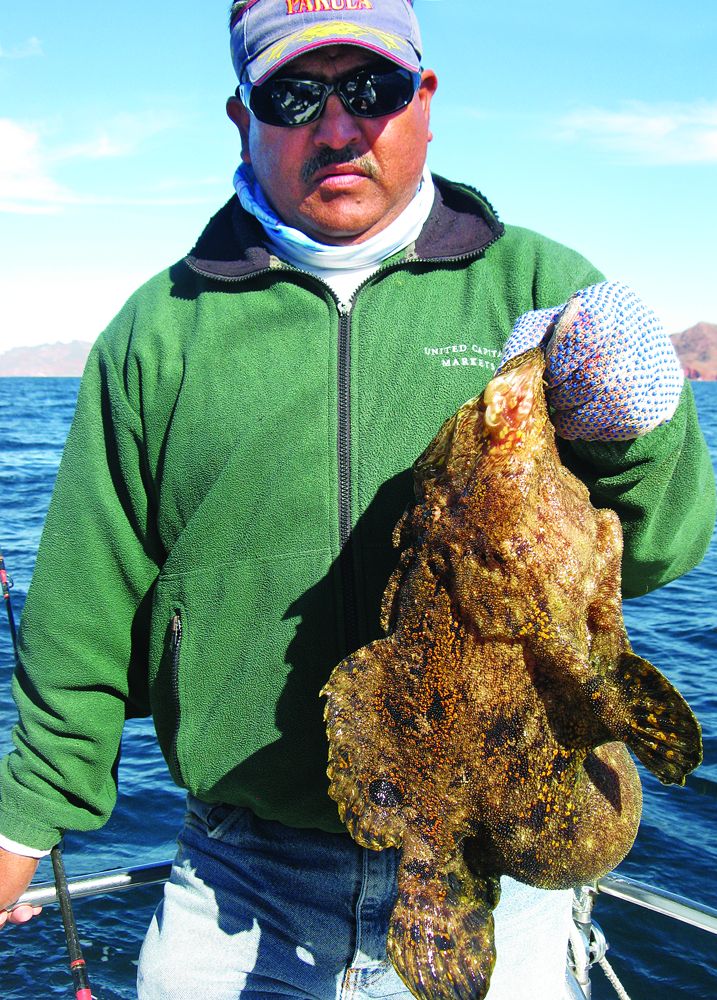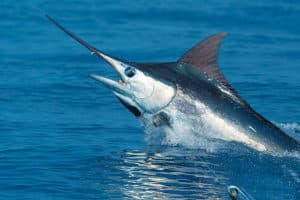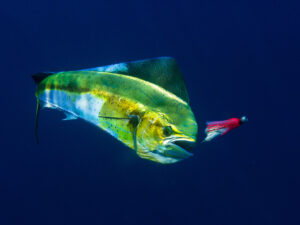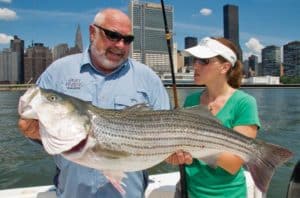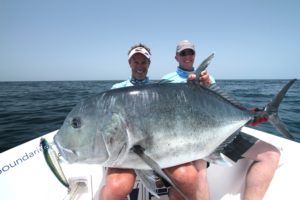In each issue of Sport Fishing magazine, a panel of five international expert ichthyologists identifies unusual and often amazing fishes in photos submitted by readers. Find out what they are and learn fascinating facts about them.
When a Brown Grouper Turns White
QUESTION:
Local fisherman and friend Trey Pugh, with fishing partner Greg Keen, were grouper fishing 80 miles out of Freeport, Texas, when they hauled this fish up from 450 feet of water on conventional hand-crank tackle. Pugh says he has caught a lot of grouper but never one quite like this. He assumes it’s a warsaw, but the color left him questioning himself. Can you confirm the ID?
Capt. Brett Holden
Freeport, Texas
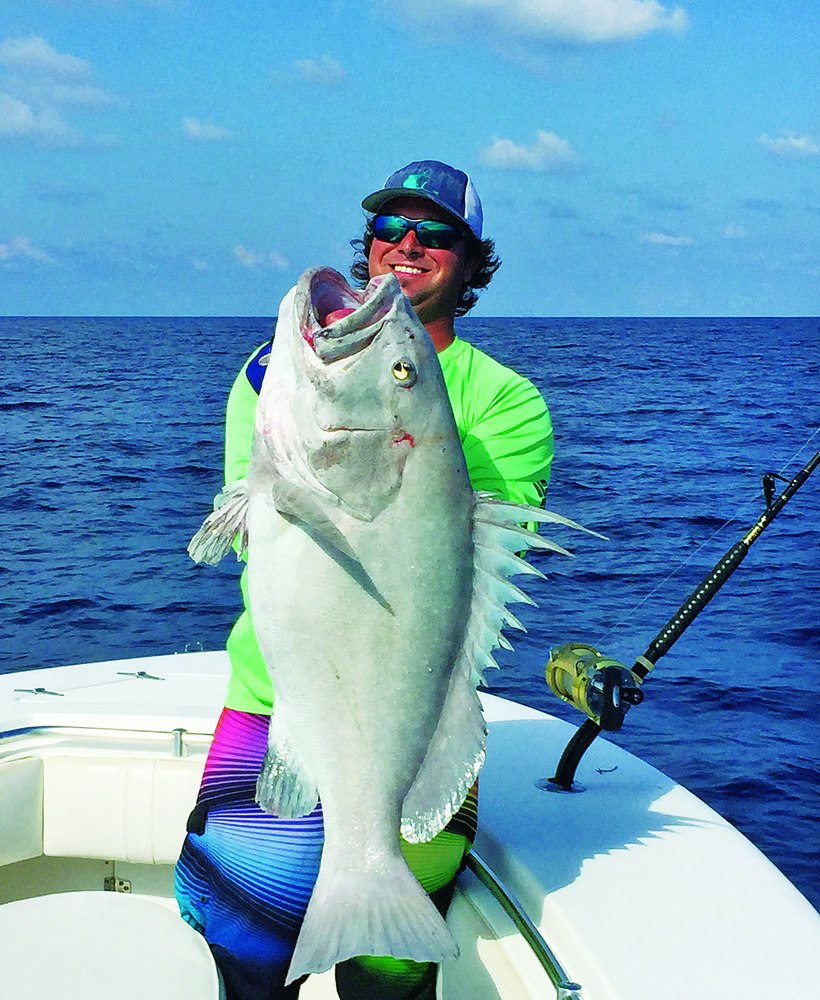
ANSWER:
Brett, I’m with you: I’ve seen hundreds of warsaws, but none this lightly colored. They do display lots of various shadings, from light tan to nearly black or smoky gray. As juveniles, they’re jet black with a pattern of white spots, so I’d rate this warsaw as an extreme light phase of the species. I should note, though, that many members of this family of fishes — the sea basses (which includes the groupers) — have an uncanny ability to change color nearly instantly. Most of these chameleons are reef-associated, and are smaller members of the family. Perhaps warsaws maintain at least some ability to control their pigment.
I can’t pass up an opportunity to relate a little warsaw trivia. These are giants, approaching goliath grouper as one of our planet’s largest bony fishes. Some years ago, when I was judging a fishing tournament in Alabama, a 385-pound Warsaw was entered. Upon close examination, I counted 13 hooks buried in this specimen’s jaws, evidence of many successful encounters with hapless anglers.
— Bob Shipp
A Mexican in Panama
QUESTION:
I caught this fish in shallow water, casting a small jig from shore in front of our “wild coast” camp in Panama. It weighed about 2 pounds, but I’ve never caught this species before — what is it?
Pascal Artieda
Panama Kayak Adventure
Pedasi, Panama
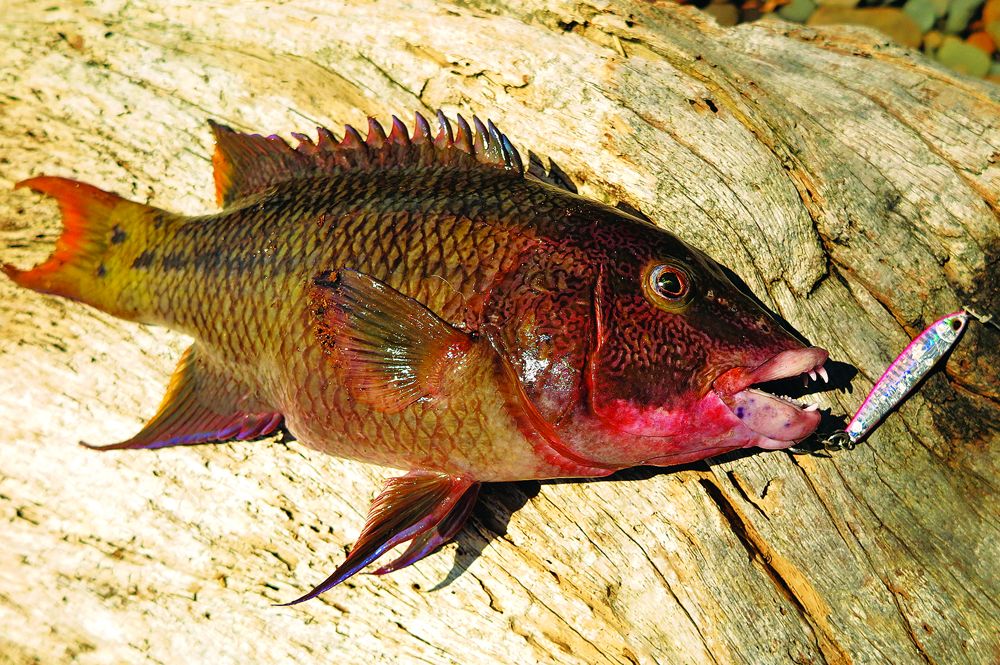
ANSWER:
Well, Pascal, you caught a nice example of the Mexican hogfish, Bodianus diplotaenia. These tropical wrasses range from the central Baja California coast throughout the Gulf of California and south to perhaps Peru. They’re quite common in the Gulf of California, but likely less so farther south in Central America. They’re relatively small (to maybe 30 inches long) and mostly solitary reef fishes — although I have seen them rooting around rocks in small groups. They’ve been caught in depths to 250 feet, but seem to prefer shallower waters and sometimes just about crawl up onto the beach. Their diet includes crabs and shrimps, clams and the occasional fish. Hogfish are inactive at night — by sundown they are seeking shelter in caves and crevices. Juveniles go one step further and create a mucous “cocoon,” which likely hides their smell from such nocturnal predators as moray eels. This species changes sex: It starts out its reproductive life as a female, and after a few years, becomes male. Males have a large bump on their forehead; your fish’s lack of one suggests it’s a female. While not a primary target of artisanal fishermen, many of the local fish markets in the Gulf of California and down the Mexican coast sell Mexican hogfish
— Milton Love
Lair of the White Worm
QUESTION:
As a biology major, I learned about the life cycle of various parasites. The worms present in the tail section of amberjacks seem to be live worms and not dormant cysts (like trichinosis). What are they, and what is their life cycle? Do they have an intermediate host? Would they eventually invade the entire fish? Do they impede the fish? And if eaten uncooked, would they infect humans?
Lou DeNicola
Jacksonville, Florida
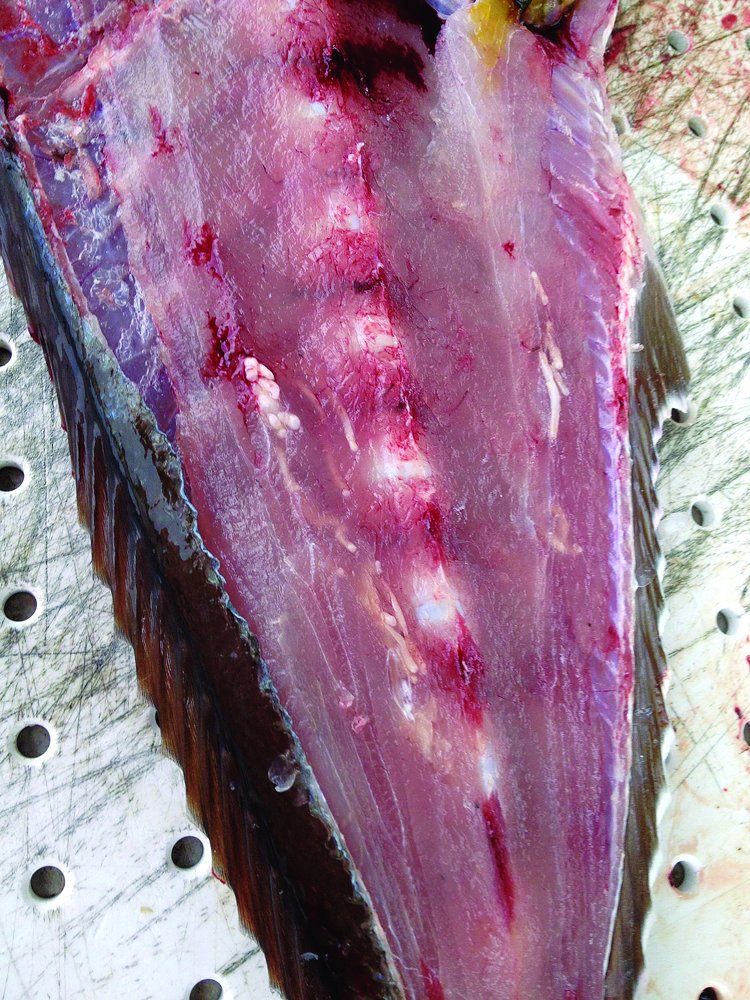
ANSWER:
Several cestode (tapeworm) parasites have been described from greater amberjack (Seriola dumerili), and cestodes as a group infest many different fishes, utilizing them as either intermediate or final hosts. Based on the number of parasites and their location in your catch, you appear to have encountered Pseudogrillotia zerbiae, one species of what are collectively referred to as spaghetti worms. P. zerbiae infestations appear to be fairly specific to jacks (family Carangidae), and especially to members of the genus Seriola, although this worm has also been reported from black marlin and pilotfish. The parasite’s plerocercoid stage, which you observed, is most commonly found in the musculature of its host’s tail region and adjacent to its spine. Happily, mammalian experiments have shown that P. zerbiae is harmless to humans if ingested. Amberjacks serve as intermediate host for these spaghetti worms; similar cestodes usually mature in sharks, and this is also likely the case for P. zerbiae.
— Ray Waldner
A Butterly Among Oysters
QUESTION:
I grow oysters for a living, and came across this little fish while tending my oysters in the beginning of October. The fish was about the size of a dime and looked very tropical, which is odd, especially during fall on the Cape. Any help identifying the fish would be greatly appreciated.
Jeff Orcutt
Orleans, Cape Cod, Massachusetts
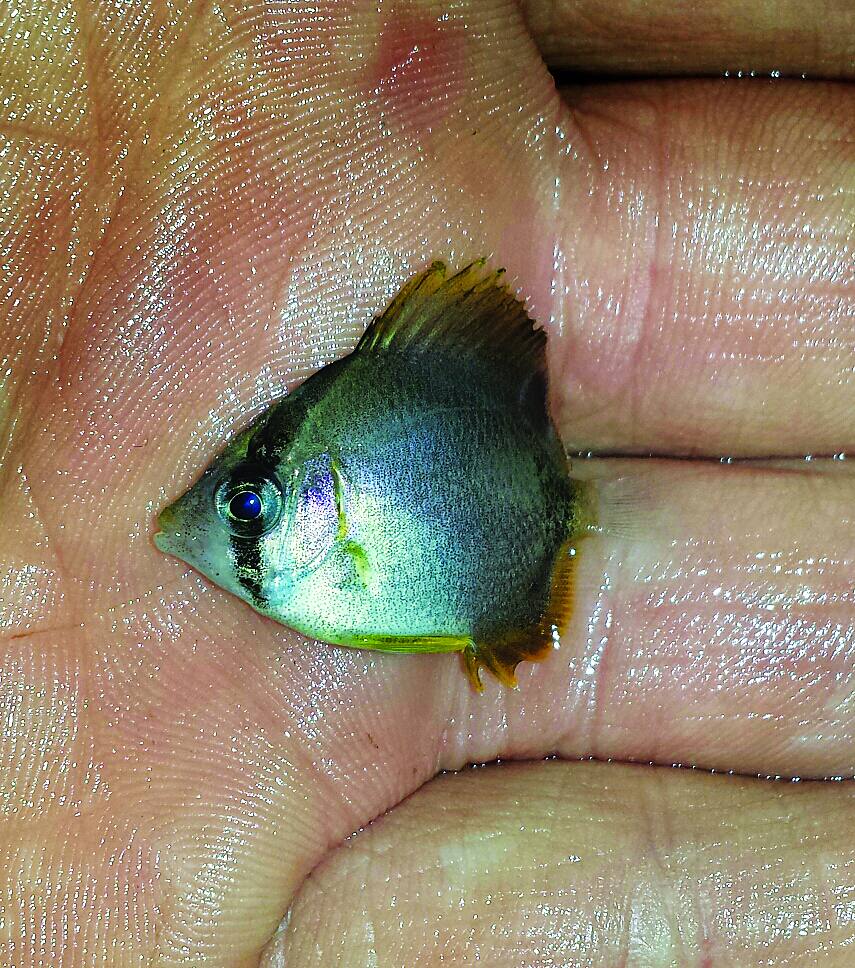
ANSWER:
Your fish is a very early juvenile spotfin butterflyfish, Chaetodon ocellatus. Two species of butterflyfishes commonly drift north in the Gulf Stream from more tropical waters while in a specialized tholichthys pelagic-juvenile stage. After transforming to the stage exhibited by your specimen, many of these migrate into estuaries along the mid-Atlantic states and settle into habitats that mimic reefs. Blocks of peat sloughing off marsh surfaces serve as one of these reef habitats. These young fish use such habitats as nurseries and grow through the summer to lengths of 21/2 inches or more. However, these faux nurseries prove to be sinks; with temperatures cooling in fall and winter, the small fish succumb when temperatures reach below 54 degrees Fahrenheit. Some other southern juveniles, however, use mid-Atlantic estuaries as nurseries in which to grow and successfully migrate back to more tropical waters before winter. Jacks in the genus Caranx are an example.
— Mike Fahay
True Hawaiian
QUESTION:
We caught this grouper in deep water off Kona. What can you tell me about it?
Mark Barville
Pineville, Louisiana
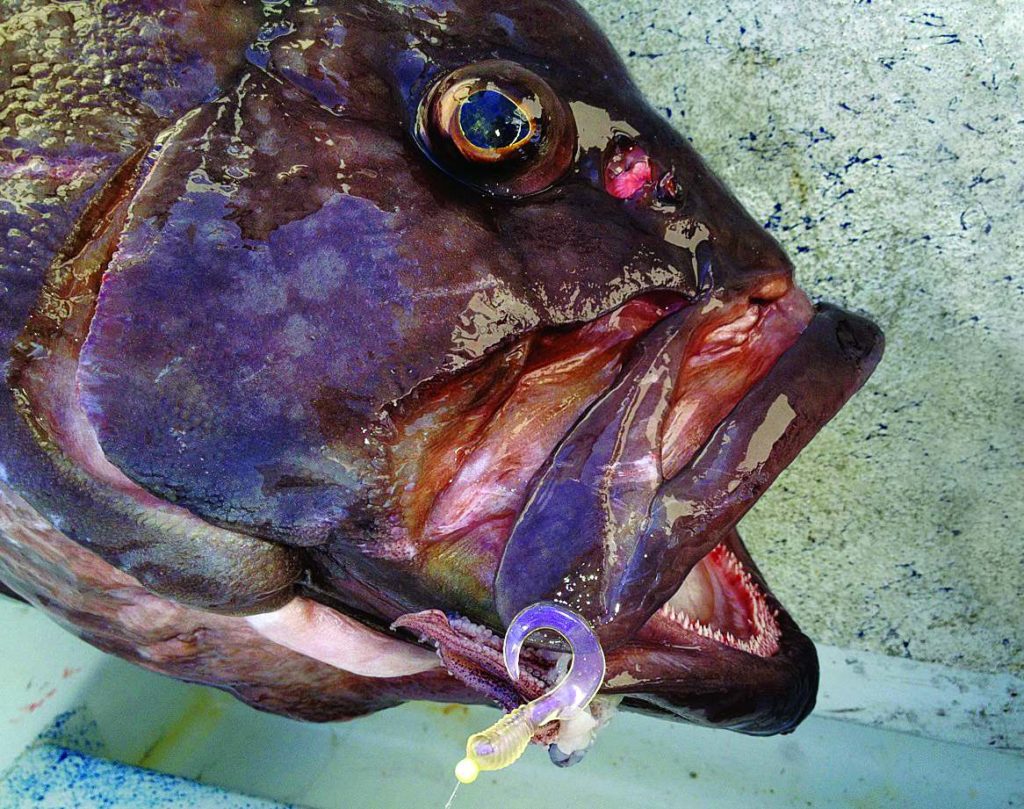
ANSWER:
Mark, this fish appears to be a Hawaiian grouper, Hyporthodus quernus. A member of the family Serranidae, this species was known for many years as Epinephelus quernus until recent genetic studies suggested a number of deep-sea grouper species should be separated from the shallow-water grouper groups. This was done by placing several deepwater groupers (including the Hawaiian) into the resurrected genus Hyporthodus.
Hawaiian grouper have a rather restricted distribution, recorded only from the Hawaiian archipelago and Johnston Island. Within this area, genetic studies suggest this species shows little evidence of population structure, indicating that eggs and larvae are widely distributed by ocean currents. The Hawaiian grouper is a reasonably large and probably long-lived species that reaches a little over 4 feet long and 50 pounds or so. Juveniles are gray-brown in color, with a pretty mottled pattern with numerous white blotches over the flanks. They occur on the bottom over reefs and ledges in waters as shallow as 30 feet or so. In contrast, adults like the one captured here live on the bottom in deep waters, down to more than 1,100 feet. As adult fish mature, they lose the mottled coloration, becoming almost uniformly dark brown, with a few faint, scattered lighter spots. Like many other groupers, Hawaiians feed mainly on crustaceans, such as shrimp and crabs, but also eat smaller fish.
— Ben Diggles
From the Fish Facts Archives
BLACK DRUM (Pogonias cromis)
Though black drum lack the status, glamour and — let’s be honest — the spirited fight of their cousin, the red drum, they do get quite large. The all-tackle-record black, taken in Delaware waters, tipped the scales at just over 113 pounds. Blacks do get around: They’re commonly caught in inshore, often brackish, waters (at times, providing good sight-casting targets) from New Jersey to Texas. Characteristic of adults are the whiskered “beards,” as this one is developing.
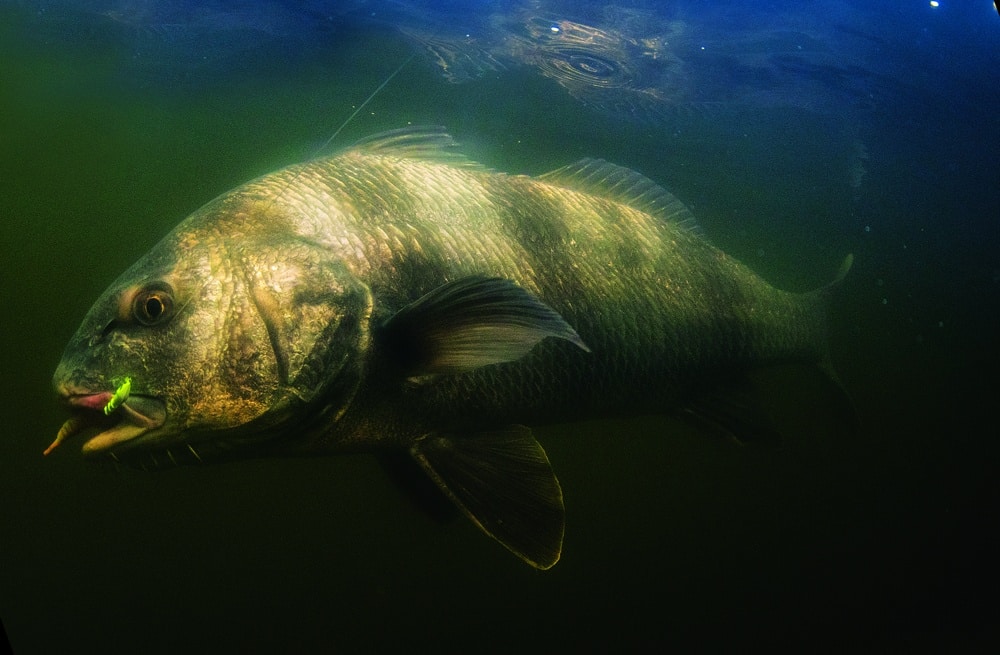
Sport Fishing‘s Prestigious International Panel of Experts
Northeast
Mike Fahay, Sandy Hook Marine Lab, New Jersey
Southeast
Ray Waldner, Ph.D., Palm Beach Atlantic University, Florida
Gulf of Mexico
Bob Shipp, Ph.D., University of South Alabama
West Coast
Milton Love, Ph.D., UCSB, California
Far Pacific
Ben Diggles, Ph.D., Queensland, Australia
Bluewater Pelagics
John Graves, Ph.D., Virginia Institute of Marine Science
CHALLENGE OUR EXPERTS (And Win Up to 10,800 Yards of Line!)
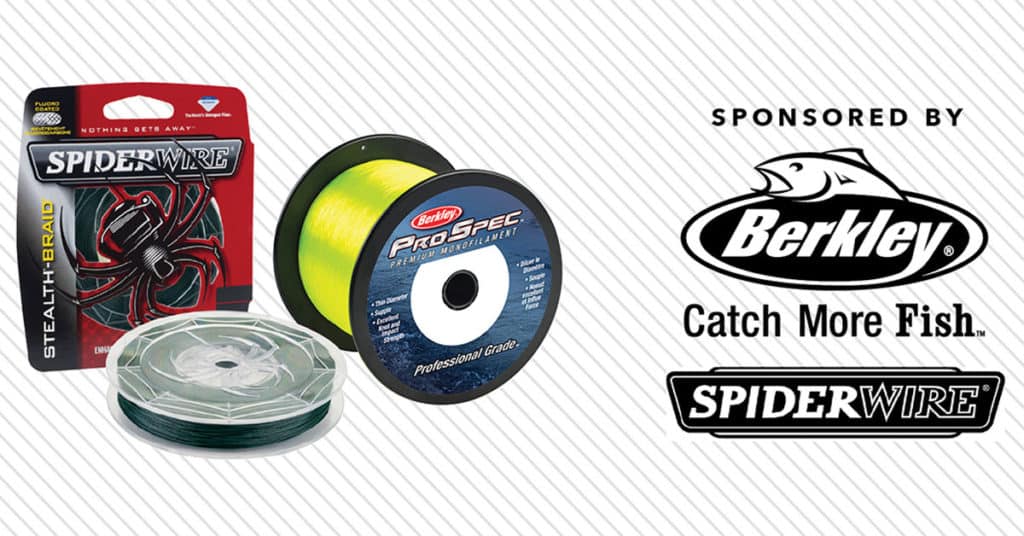
Send in your question and any relevant photos of your mysterious catch or observation for our experts’ ID and feedback. If we publish your question and you have a shipping address within the United States or Canada, you’ll win a 3‑pound spool of Berkley Pro Spec ocean-blue or fluorescent-yellow monofilament (1,000 to 10,800 yards, depending on line strength) or a 1,500‑yard spool of Spiderwire Stealth braid up to 100‑pound‑test! Send questions and images via email to fishfacts@sportfishing.com (include your hometown) or via post to Sport Fishing Fish Facts, 460 N. Orlando Ave., Suite 200, Winter Park, FL 32789.
